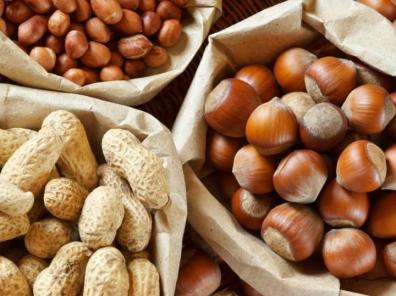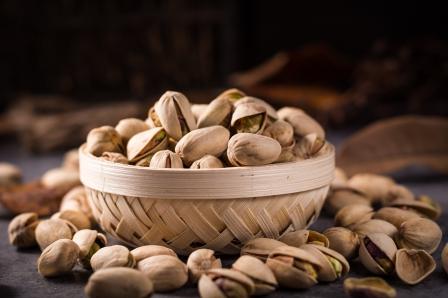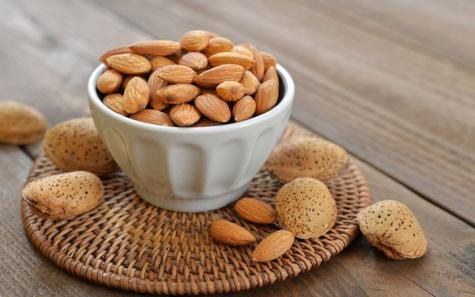Peanuts, also known as groundnuts, are a versatile and nutritious crop grown in many parts of the world. The small legumes are packed with protein, healthy fats, and essential nutrients making them a popular snack and ingredient in various culinary dishes. In this comprehensive guide, we will explore the cultivation, harvesting, and nutritional benefits of farm peanuts. Cultivation of Farm Peanuts: Peanuts are warm-season crops that thrive in sandy, well-drained soil with a pH level between 5.9 and 7.0. They require a frost-free growing season of about 4 to 5 months to reach maturity. The planting of peanuts usually takes place in the spring once the soil temperature reaches around 65°F (18°C). Farmers typically sow peanut seeds 1-2 inches deep and 6-8 inches apart in rows. Peanut plants go through several stages of growth, starting with the germination of the seed, followed by the emergence of the plant, flowering, peg development, and pod formation. Peanuts are unique in that they flower above ground but fruit below the soil. The yellow flowers self-pollinate and then wither, leaving behind small pegs that grow downward into the soil, forming the familiar peanut pods. Peanuts require consistent watering throughout the growing season, with an inch of water per week being ideal. Farmers often use irrigation systems to ensure the plants receive adequate moisture, especially during hot and dry periods.
.
Weeding is also essential to prevent competition for nutrients and reduce the risk of diseases. Harvesting Farm Peanuts: The time to harvest peanuts is when the plants begin to yellow and wither, usually around 120-150 days after planting. To harvest peanuts, farmers use specialized equipment such as diggers or combines to lift the plants from the ground and separate the peanuts from the rest of the plant. The peanut plants are then left to dry in the field for a few days. After drying, farmers use peanut combines to separate the peanuts from the plant material. The machines shake the plants to dislodge the peanuts, which are then collected and transferred to a drying facility. Proper drying is essential to reduce the moisture content of the peanuts to prevent mold growth. Once dried, peanuts are cleaned to remove any remaining debris and foreign material. The peanuts are then graded based on size and quality before being stored in silos or warehouses. Proper storage conditions, including temperature and humidity control, are crucial to prevent the development of aflatoxins, harmful toxins produced by certain molds that can contaminate peanuts. Nutritional Benefits of Farm Peanuts: Peanuts are a nutrient-dense food with a wide range of health benefits. They are rich in protein, with a 1-ounce serving of peanuts containing around 7 grams of protein. Peanuts also provide healthy fats, including monounsaturated and polyunsaturated fats that are beneficial for heart health.
..
In addition to protein and fats, peanuts are a good source of various vitamins and minerals, including niacin, folate, phosphorus, magnesium, and zinc. They also contain antioxidants such as resveratrol and vitamin E, which help protect cells from damage caused by free radicals. One of the key nutritional benefits of peanuts is their high content of resveratrol, a compound that has been linked to various health benefits, including reduced inflammation and improved heart health. Peanuts are also a good source of fiber, which can help promote digestive health and reduce the risk of chronic diseases such as heart disease and diabetes. Incorporating peanuts into a balanced diet can have numerous health benefits, including improved satiety, reduced risk of heart disease, and better blood sugar control. However, it’s important to consume peanuts in moderation, as they are calorie-dense and excessive consumption can lead to weight gain. Conclusion: Farm peanuts are a versatile and nutritious crop that is grown and harvested in various parts of the world. From cultivation to harvesting and nutritional benefits, there is much to appreciate about these small legumes. Whether enjoyed as a snack, added to recipes, or processed into peanut butter, peanuts offer a range of health benefits that make them a valuable addition to a balanced diet. By understanding the cultivation, harvesting, and nutritional aspects of farm peanuts, we can appreciate their impact on agriculture and human health. Farm peanuts play a significant role in agriculture, both economically and environmentally. Farmers who cultivate peanuts often practice crop rotation, alternating peanut crops with other plants like corn or cotton.
…
This rotational system helps improve soil fertility, reduces the buildup of pests and diseases specific to peanuts, and enhances overall crop yields. Additionally, peanuts are a nitrogen-fixing crop, meaning they have the ability to convert atmospheric nitrogen into a form that can be used by plants. This helps reduce the need for synthetic fertilizers, promoting sustainable farming practices and minimizing environmental impact. In terms of economic importance, peanuts are a valuable cash crop for many farmers around the world. The global peanut market is vast, with different varieties and forms of peanuts being traded internationally. Peanut oil is used in cooking and food processing, while peanut meal (the byproduct of oil extraction) is used as animal feed. Peanut butter, peanut snacks, and peanut-based products are popular consumer choices, driving demand for peanuts in various forms. In countries where peanuts are a staple crop, such as the United States, China, India, and Nigeria, peanut farming contributes significantly to the local economy and provides employment opportunities for farmers and workers in the processing and distribution sectors. From a sustainability standpoint, peanuts are considered a relatively low-impact crop, requiring fewer inputs like water and pesticides compared to many other crops. However, like any agricultural activity, peanut farming does have certain challenges and considerations that need to be addressed for sustainable production. One of the key challenges in peanut farming is the susceptibility to diseases, such as leaf spot, stem rot, and aflatoxin contamination. Farmers need to implement good agricultural practices, including crop rotation, planting disease-resistant varieties, and proper storage techniques, to mitigate these risks and ensure a healthy peanut crop.




Your comment submitted.